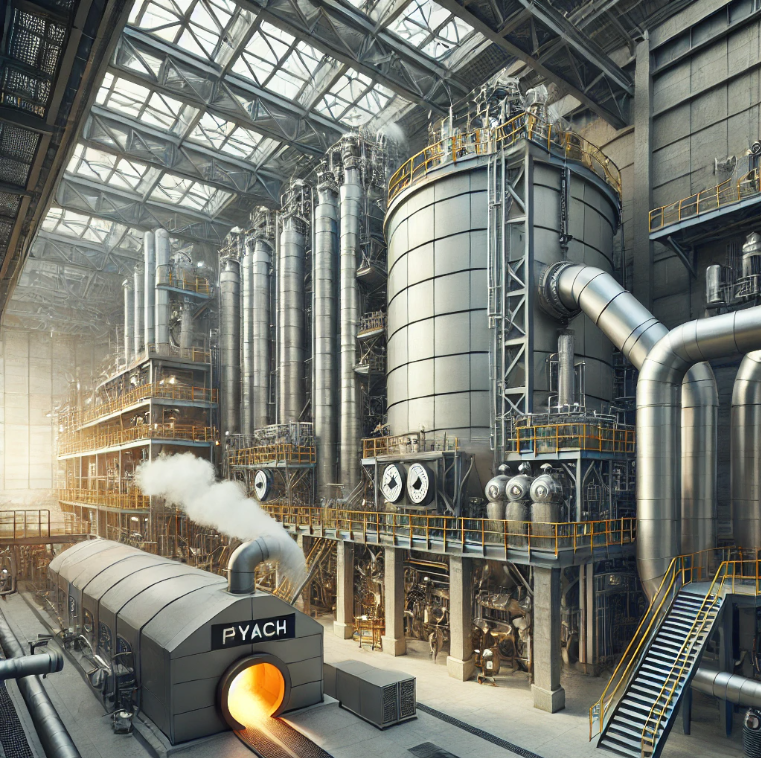Contents
DG Cement Internship Diaries : How Cement Kilns Harness Waste Heat for Energy Efficiency

TO Download this post and all the books and excel sheets and my personal notes and presentations I collected about cement industry in the last 30 years click the below paypal link
Cement manufacturing is an energy-intensive process, and cement kilns are known for generating a massive amount of waste heat. This energy, if not captured, simply dissipates into the atmosphere, contributing to energy inefficiency and environmental impact. At DG Cement, however, they have implemented cutting-edge solutions to harness this waste heat, using specialized boilers to turn it into productive energy.
In this post, we’ll explore how two key types of boilers, AFBC (Atmospheric Fluidized Bed Combustion) Boilers and AQC (Air Quality Control) Boilers, play a crucial role in reducing waste, improving energy efficiency, and minimizing the environmental footprint of the cement production process.
1. The Role of Flyash Boilers (AFBC Boilers)
One of the most innovative methods used in cement factories like DG Cement is the implementation of Flyash Boilers, specifically AFBC (Atmospheric Fluidized Bed Combustion) Boilers. These boilers are designed to burn fly ash, which is a byproduct of the kiln process. Fly ash typically contains combustible materials, and rather than disposing of it, AFBC boilers utilize it to produce steam.
Here’s how it works:
- Combustion of Fly Ash: Fly ash, a residue from the kiln’s combustion process, is fed into the AFBC boiler where it is burned at high temperatures.
- Steam Generation: The heat from this combustion generates steam, which can then be used for various energy needs within the cement plant, such as powering turbines for electricity or providing heat for other processes.
- Environmental Benefits: This not only reduces the volume of fly ash waste that would otherwise be disposed of but also creates an additional energy source, cutting down on fuel consumption and lowering CO2 emissions.
In this way, DG Cement’s AFBC boilers contribute to a more sustainable and efficient production process, making use of what would otherwise be waste material.
2. AQC Boilers: Harnessing Kiln Heat
Another impressive solution to energy waste at DG Cement is the use of AQC (Air Quality Control) Boilers. These boilers are designed to capture waste heat from the cement kiln itself. Cement kilns operate at extremely high temperatures, and a substantial amount of the energy they generate is lost as heat. AQC boilers tap into this lost energy by capturing the waste heat and converting it into usable steam.
Here’s a breakdown of the process:
- Heat Capture: The AQC boiler is attached to the cement kiln and is specifically designed to capture the excess heat that would otherwise escape into the atmosphere.
- Steam Production: The captured heat is used to generate steam, which can be directed to drive turbines, generate electricity, or be used in other parts of the cement production process.
- Energy Efficiency: By reusing the waste heat, AQC boilers dramatically improve the overall energy efficiency of the cement plant, helping reduce operational costs and lowering the carbon footprint of the facility.
By effectively capturing and reusing waste heat, DG Cement significantly enhances its energy efficiency and cuts down on environmental impacts.
3. Benefits of Utilizing Waste Heat Boilers in Cement Production
The implementation of waste heat boilers such as AFBC and AQC systems offers numerous benefits for cement factories, including DG Cement:
- Increased Energy Efficiency: By reusing waste heat, these boilers reduce the need for additional fuel sources, which lowers energy consumption and improves overall plant efficiency.
- Reduced Environmental Impact: The use of waste heat boilers helps minimize greenhouse gas emissions by reducing the need for fossil fuels and making use of energy that would otherwise be wasted.
- Cost Savings: Lower energy usage directly translates to reduced operational costs. For large-scale plants like DG Cement, this can mean substantial savings over time.
- Waste Reduction: AFBC boilers help reduce the amount of fly ash waste that must be disposed of, turning it into a productive energy source instead.
4. DG Cement’s Commitment to Sustainable Production
By incorporating AFBC and AQC boilers, DG Cement is not only optimizing energy usage but also demonstrating a commitment to sustainable production practices. Cement production is known for being resource-intensive, but through the integration of waste heat recovery systems, DG Cement is leading the way in reducing the environmental footprint of this essential industry.
Conclusion
DG Cement’s use of waste heat recovery systems like the Flyash Boiler (AFBC Boiler) and the AQC (Air Quality Control) Boiler is a testament to how innovation in energy management can transform an industry traditionally seen as high-impact into one that champions sustainability and efficiency. These boilers not only save energy but also reduce emissions, waste, and costs, making them essential components in the modern cement production process.
For those interested in the cement industry or sustainable manufacturing practices, DG Cement offers a glimpse into how cutting-edge technologies can revolutionize energy management, making a lasting impact on both the business and the environment. 🌍
For further insights on cement production, sustainable practices, and the latest technologies in the industry, stay tuned to our DG Cement Internship Diaries series!
TO Download this post and all the books and excel sheets and my personal notes and presentations I collected about cement industry in the last 30 years click the below paypal link
